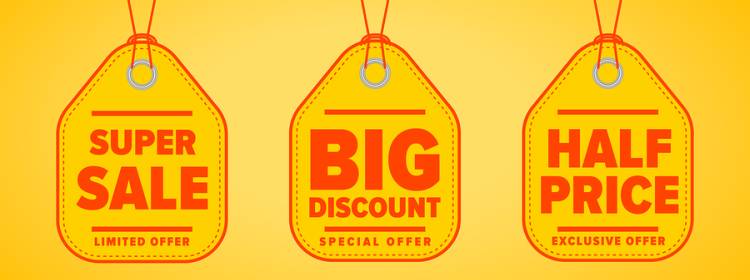
Fact – every business executive is a consumer.
Fact – every consumer, certainly here in Australia, is exposed to a barrage of discounting and sales offers from the retail sector.
In fact, on any given day, whether on TV, radio, billboard or online, we are bound to be exposed –in our experience- to at least 5-10 “discounting sales” or “discounted special offers” that are being promoted by companies selling everything from food to solar power, new homes to motors cars, from beer and wine to computers.
You have to wonder whether these retailers (and their advertising agencies) realise the damage they are doing to their credibility and by extension, to the credibility of salespeople in the Business-to-Business (B2B) and the industrial sectors.
The plethora of discounts and ‘special offer’ sales is making consumers wary and leaves them wondering if these companies are either really stupid and over-stocking, or are simply over-pricing their products and then having to discount them to sell them off at the price they should have sold them in the first place.
Any which way we look at it, the extraordinary amount of special offers and advertising of discounts has made selling in the B2B and industrial sectors more difficult.
Why?
Because decision-makers who meet with salespeople have a healthy dose of skepticism that the price they are being quoted is not necessarily the “best price” and that somewhere there is the potential of a special offer or discount. After all, these decision-makers are also consumers and have been over-exposed to that selling approach from the retailers. Their logic is simple – if it can happen in their private lives, why not in their business capacities.
Salespeople in the B2B arena often complain that their prospects put up major resistance arguing that pricing is too high. ‘Compared to what?’ is the question that should be asked.
No one can deny that with the high degree of competition from multiple sources of supply, price is always going to be a challenge. But that looks at price as an absolute, rather than as a relative value. The truth is that pricing can never be an absolute.
Price relative to Value
 Companies that invent products and thus invest huge sums of money, time and resources in creating new products are naturally going to want to recover those costs. That makes their products – at least for a period of time – more costly. Companies that make it easier for their customers to buy, by opening up multiple channels for distribution usually have higher carrying costs and so on. The relative value to buyers is getting new products and solution earlier or finding it easier to get what they need because of the multiple channels.
Companies that invent products and thus invest huge sums of money, time and resources in creating new products are naturally going to want to recover those costs. That makes their products – at least for a period of time – more costly. Companies that make it easier for their customers to buy, by opening up multiple channels for distribution usually have higher carrying costs and so on. The relative value to buyers is getting new products and solution earlier or finding it easier to get what they need because of the multiple channels.
Australian businesses are quick to blame Asia, the Internet / Online buying but this argument, too, needs to be seen in relative terms.
Whilst an item may be less expensive when comparing one article to another, these comparisons are not always like for like. A slight change in materials, in production methodology or in quality control could have a dramatic impact on lowering cost, but it could also have an impact on product efficacy.
It would be unreasonable to expect buyers to want to pay more. But equally, it is unreasonable for buyers to expect their suppliers to simply capitulate and offer discounts and special offers because of a television blitz that has skewed their view. A more pragmatic approach is needed, one that explores value rather than absolute price.
Next time we will talk about how to shift the conversation from Price to Value.
Remember everybody lives by selling something.
Author: Sue Barrett, www.barrett.com.au


New Article Email Notification